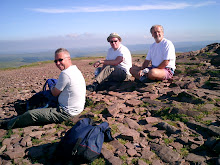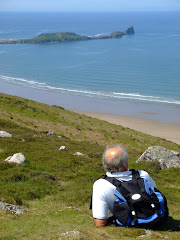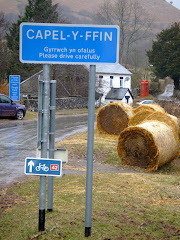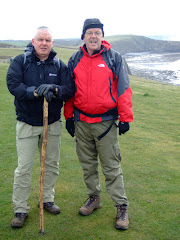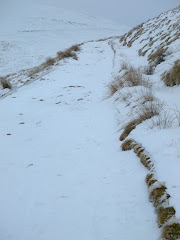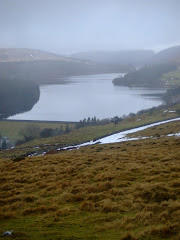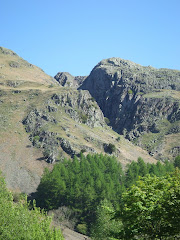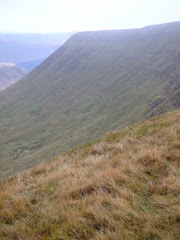

Driving along the A4215 about a mile outside Defynnog my heart skipped a beat, as less than 20 feet away in an open field beside the road I could see the unmistakable fanned tail and large wing-span of a Red Kite. I watched almost hypnotised as the Kite hovered and swooped oblivious that he or she was being watched in admiration. Before arriving in Defynnog a Buzzard flew across the road about 30 feet in front of me! A great start to the day.
It's wonderful that the Red Kites are becoming a common sight again in this part of Powys. This is the fourth that I've seen at quite close quarters this summer.
Turning left at the junction of the A4067 the route takes me south of Crai to the start of the walk. Unfortunately, the summit of Fan Gyhirych was hidden behind low cloud but I suspect that the views back to the Cray Reservoir would be stunning in really good clear weather.

We had seen Fan Gyhirych earlier in the year from Fan Nedd in the east and it had intrigued me. However, I was approaching it on this occasion from a totally different direction. Climbing from the road to the north west of the summit the lower section of the mountain was quite boggy after the recent period of wet weather, although the streams running off the mountain were in full flow.
 Unlike their more popular neighbours to the east, there are no well worn 'highways' created by the populist walkers who tramp the Pen-Y-Fan range. You just need to first of all find and then follow any feint paths that you are lucky enough to stumble upon.
Unlike their more popular neighbours to the east, there are no well worn 'highways' created by the populist walkers who tramp the Pen-Y-Fan range. You just need to first of all find and then follow any feint paths that you are lucky enough to stumble upon.The first section was adjacent to the fast rushing water as it crashed down from the upper slopes. Listening to the sound of the streams as they rushed past me I could easily imagine eating a picnic in the summer next to some of the stunning waterfalls.

The west face of Fan Gyhirych is remarkably steep when you get to about 400 feet from the summit. My calves were screaming because of the increase in Lactic Acid as the scramble up the final gully was tricky although not really difficult.

A brief shower swept almost horizontally across the mountain side, although surprisingly it wasn't very heavy and didn't last very long.
 Emerging through the deep cleft you are pleased to reach the flat plateau.
Emerging through the deep cleft you are pleased to reach the flat plateau.Searching for the trig point in the cloud two walkers appear from nowhere and disappear almost as quickly, after we exchange brief greetings.
The highest point at 725m (another South Wales Nuttall to tick off the list) is located towards the western side of the summit plateau.
I was disappointed that I couldn't see the superb eastern face of Fan Gyhirych or the spectacular views further west to Fan Hir and Fan Brycheiniog.

The wet grass and rocks caused an embarrassing fall as I slid down the first section of the cleft and tumbled over to end up lying on my chest – luckily the only bruise was caused to my ego!
I was able to follow a similar line back down the mountain out of the clouds to return to the start point.
If you want to walk in solitude then Forest Fawr is the place to visit. Steve and I climbed Fan Llia and Fan Nedd in June and we didn't see anyone after we left the car park.

The following are some of the landscape that I missed on todays walk because of the low cloud:

Fan Gyhirych's dramatic eastern face.


To the west Fan Hir and Fan Brycheiniog.


























